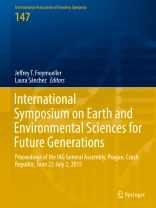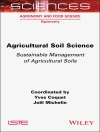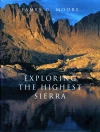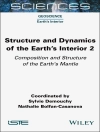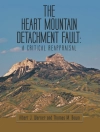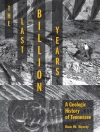This book series is composed of peer-reviewed proceedings of selected symposia organized by the International Association of Geodesy. It deals primarily with topics related to Geodesy Earth Sciences : terrestrial reference frame, Earth gravity field, Geodynamics and Earth rotation, Positioning and engineering applications.
Table of Content
Part 1 – Geodetic Reference Systems and Frames.- Simulation of VLBI observations to determine a global TRF for GGOS.- The Assessment of the Temporal Evolution of Space Geodetic Terrestrial Reference Frames.- Analysis strategies for the densification of the ICRF with VLBA Calibrator Survey sources.- Towards the Definition and Realization of a Global Absolute Gravity Reference System.- Part 2 – Static Gravity Field Observations and Modelling.- The linearized fixed gravimetric boundary value problem and its solution in spheroidal approximation.- On the convergence of the h-p finite element method for solving boundary value problems in physical geodesy.- Domain Transformation and the Iteration Solution of the Linear Gravimetric Boundary Value Problem.- A New Argentinean Gravimetric Geoid Model – GEOIDEAR.- Exploitation of marine gravity measurements in the validation of global gravity field models.- Traceability of the Hannover FG5X-220 to the SI units.- Evaluation of Robert Sterneck’s historical gravity pendulum measurements in the Czech territory.- Part 3 – Detection and Modelling of Gravity Field Variations.- Ground-satellite comparisons of time variable gravity: results, issues and on-going projects for the null test in arid regions.- Impact of groundtrack pattern of double pair missions on the gravity recovery quality – Lessons from the ESA SC4MGV project.- A posterior de-aliasing of ocean tide error in future double-pair satellite gravity missions.- A method of airborne gravimetry by combining strapdown inertial and new satellite observations via dynamic networks.- Hybrid gravimetry as a tool to monitor surface and underground mass changes.- Tidal spectroscopy from a long record of superconducting gravimeters in Strasbourg (France).- Investigations of a suspected jump in Swedish repeated absolute gravity time series.- Part 4 – Earth Rotation and Geodynamics.- Detailed analysis of diurnal tides and associated space nutation in the search of the Free Inner Core Nutation resonance.- Chandler wobble and frequency dependency of the ratio between gravity variation and vertical displacement for a simple Earth model with Maxwell or Burgers rheologies.- Detection of the atmospheric S
1 tide in VLBI polar motion time series.- Free Core Nutation parameters from hydrostatic long-base tiltmeter records in Sainte Croix aux Mines (France).- Numerical Issues in Space-Geodetic Data Analysis and their Impact on Earth Orientation Parameter.- A non-tidal atmospheric loading model: On its quality and impacts on orbit determination and C20 from SLR.- Effects of meteorological input data on the VLBI station coordinates, network scale, and EOP.- History of monitoring Earth orientation, and re-analyses of old data.- Part 5 – Advances in GNSS Technologies, Data Processing, and Applications.- Multi-GNSS PPP-RTK: mixed-receiver network and user scenarios.- A New Method for Real-Time PPP Correction Updates.- Towards reliable and precise Bei Dou positioning with stochastic modelling.- PPP carrier phase residual stacking for turbulence investigations.- On Removing Discrepancies Between Local Ties and GPS-Based Coordinates.- Receiver Antenna Phase Center Models and Their Impact on Geodetic Parameters.- Singular spectrum analysis for modeling geodetic time series.- Impact of Limited Satellite Visibility on Estimates of Vertical Land Movements.- Noise filtering augmentation of the Helmert transformation for the mapping of GNSS derived position time series to a target frame.- Part 6 – Geodetic Modelling of Atmospheric Variables.- Assessing GPS + Galileo Precise Point Positioning Capability for Integrated Water Vapor Estimation.- Atmospheric perceptible water in Somma-Vesuvius area during extreme weather events from ground-based GPS measurements.- Water vapor radiometer data in very long baseline interferometry data analysis.- Part 7 – Geodetic Monitoring of Surface Deformations.- Land subsidence detected by persistent scatterer interferometry using ALOS/PALSAR data from the Nakagawa lowland in the central Kanto Plain, Japan.- A new velocity field of Greece based on seven years (2008-2014) continuously operating GPS station data.- SPINA Region (South of Iberian Peninsula, North of Africa) GNSS geodynamic model.- Continuous Kinematic GPS Monitoring of a Glacier Lake Outburst Flood.- Water in Central Asia – Reservoir Monitoring with Radar Altimetry along the Naryn and Syr Darya Rivers.- Erratum to: AMethod of Airborne Gravimetry by Combining Strapdown Inertial and New Satellite Observations via Dynamic Networks.
